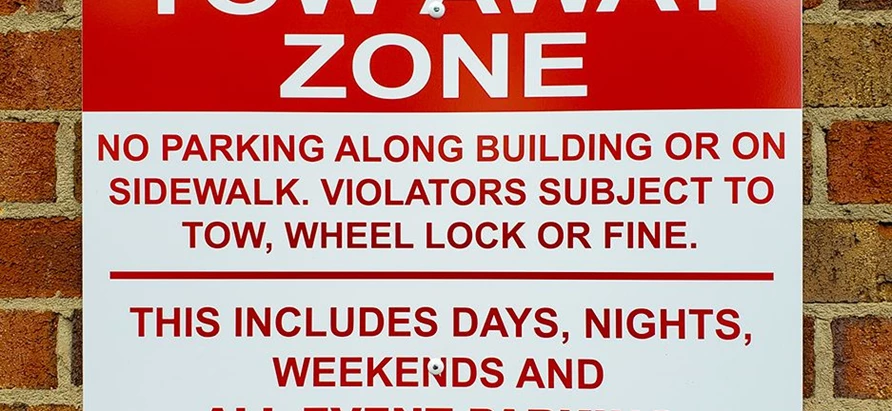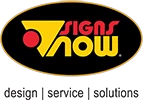Regulatory & Safety Signs

Security and safety starts with signage first!
Most employees and visitors take safety signs for granted. And maybe that’s by design, since the purpose behind most hazard, warning, and safety signage is to reduce workplace injury and unnecessary risk-taking, ensuring the workweek continues without any snags or hiccups. While preventing catastrophe doesn’t always make the headline news, informing patrons and workers of potential dangers in your facility will safeguard their health, and keep you in line with regulatory requirements.
Since 1970, workplace deaths have been reduced by more than 60%, and occupational injuries have declined 40%. Most of that drop is the result of strict enforcement of guidelines sets forth by OSHA (Occupational Safety and Hazard Administration) and NIOSH (National Institute for Occupational Safety and Health). Sure, one might assume safety signage played a minor role in those numbers, but no company should risk reversing this life-preserving trend for the sake of a few dollars.
And if you’re concerned about the bottom line, look at hazard warning signs as an opportunity for brand reinforcement, personalization, and paying homage to sponsors and advertisers in a unique way.
What are the main types of safety signage?
- OSHA Header Signs – These signs are restricted by OSHA to a stringent set of design rules. The three primary types include danger signs, warning signs, and caution signs. The color of each sign – either red, orange, or yellow – matches to the corresponding level of risk i.e. the more life-threatening the peril, the closer to red the sign becomes. Unfortunately, customization is rarely an option when it comes to OSHA header signs.
- Roadside & Jobsite Safety Signs – If you want to keep drivers alert and protect construction workers in hazardous traffic situations, there’s no better option. Whether you’re letting motorists know that road work lies ahead, or notifying them of the possibility that rocks may fall from above, Signs Now can help you develop a solution to keep your traffic rolling and your workers working.
- Barricades – Barricades are crucial barriers designed to divert vehicle and foot traffic. For events and large construction zones, these signs can help passersby navigate crowded roadways and sidewalks.
- Queueing Line – Need to keep people in line? Stanchions and queuing lines can facilitate orderly movement, while also cordoning people off from a primary lobby or main atrium.
- No Trespassing & Restricted Access Signs – Warn unauthorized people and vehicles to stay away from a hazardous zone or private property. These signs often feature white backgrounds with red headers or typography. No Trespassing Signs frequently contain penalty information to add authority to their commanding language.
- Chemical & HazMat Signs – These signs vary, but generally delineate chemical storage areas where only authorized personnel should enter. If your business is a commercial office or retail warehouse, you may not have to worry about exposing employees or visitors to potential biohazards, as say, a pharmaceutical company.
What are some common shapes of safety signs?
1. Triangles – Triangles can serve as both caution and warning signs, usually depicting a possible outcome for transgressing a safety rule. As a result, they customarily show pictograms rather than messaging.
2. Circles – If you see a circular safety sign, they’ll usually depict a mandatory or highly recommended action you must adhere to; for example, signs admonishing employees to wear yellow hard hats, or to place safety goggles on before entering a specified zone. While not as urgent, circular-shaped signs are crucial to safe operating procedure.
3. Squares or Rectangles: Signs of this shape often serve as versatile information centers. They display general notices and emergency information involving first-aid, fire-fighting, etc.
4. A Slashed-Out Circle: Think of the now common “No Smoking” sign. A forty-five-degree diagonal slash from the upper-left to the lower-right stretches across the circle, often intersecting the pictograph of a prohibited object. This can also be used to highlight prohibited or forbidden actions.
Are safety signs color-coded?
On a basic level, safety signs use color to help bring urgency to the messaging of the sign. Yes, there are some color connections that we make in our conscious mind from constant exposure i.e. red means stop, green means go, etc. But there’s also a fair bit of color psychology that influences our behavior and reactions to signage of a particular hue and shade. At Signs Now, we can guide you through the wide range of different colors and their various connotations.
The principal colors in safety signage and their meanings are:
- Red – Signifies immediate, life-threatening danger.
- Amber or Orange – Signifies potential debilitating injury.
- Yellow – Signifies possible minor injuries. One should be careful, examine surroundings, and stay aware.
- Blue – Signifies that the described behavior or action is mandatory.
- Green – Can signify potential routes for egress, first aid, or that there is no risk for danger.
Ready to take the next step with hazard, warning, and safety signage?
Contact us today and set up a consultation. We’ll discuss your needs and find the solution best-suited to your business. You can count on Signs Now Holland for measurement, design, and permitting (when required) as well as mounting or installation. Every location is a local source for custom graphics, signage and displays. Second-to-none in delivery time and quality signs, at Signs Now, we take safety signage seriously.
Related Blogs:
Comissioning Your Perfect Sign
Infographic: Sign Up For Work Site Safety
Call Signs Now Uptown Charlotte at (704) 343-9619 for more information.
Call Signs Now Uptown Charlotte at (704) 343-9619 for more information.

